M5-8 BB LAB
1/100
There's no tags or description
Looks like no tags are added yet.
Name | Mastery | Learn | Test | Matching | Spaced |
|---|
No study sessions yet.
101 Terms
Secretors
Individuals who express blood group substances (A,B,H antigens) in soluble forms detectable in secretions such as saliva.
(A,B,H antigens)
Secretors are individuals who express blood group substances (—) in soluble forms detectable in secretions such as saliva.
Neutralize or inhibit
Secretors are water soluble substances are readily detected in small quantities
- —or —- the capacity of antibodies to agglutinate specific red cells
Hemagglutination-Inhibition or Neutralization
Evaluates the relative strength/potency of water-soluble substances
Principle of Secretors
different from ABO typing with direct agglutination of red cell
A
Secretors Phenotype
Example: Type A individual
AO
Secretors Genotype
Example: Type A individual
Saliva
Secretors
commonly used sample since it is easily collected, unlike other bodily fluids with invasive procedures

Secretors Reagent
1:4
Secretors Reagent
reagents are diluted with — ratio of dilution since the antigens detected are much weaker/lesser, thus, less antibodies are also used = zone of equivalence
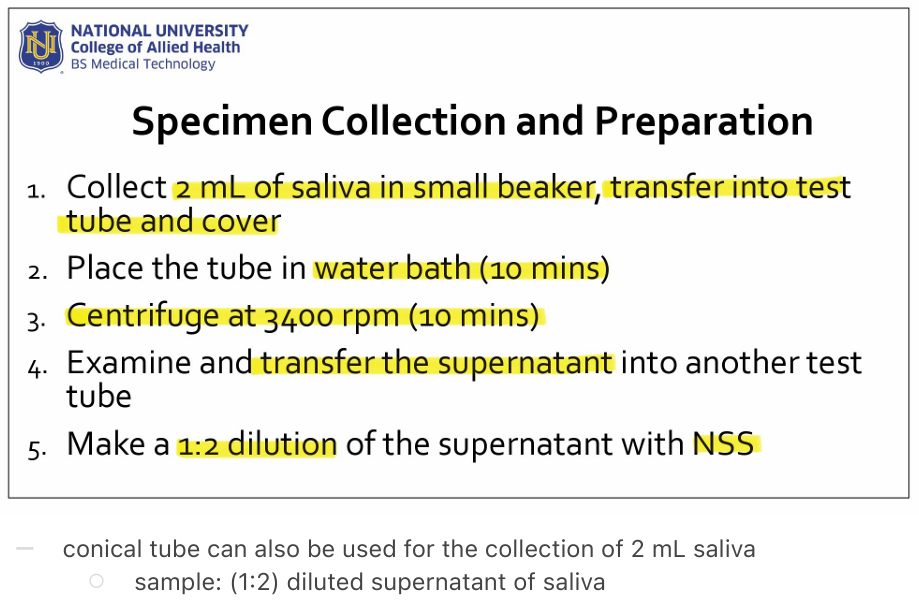
Secretor Status Determination

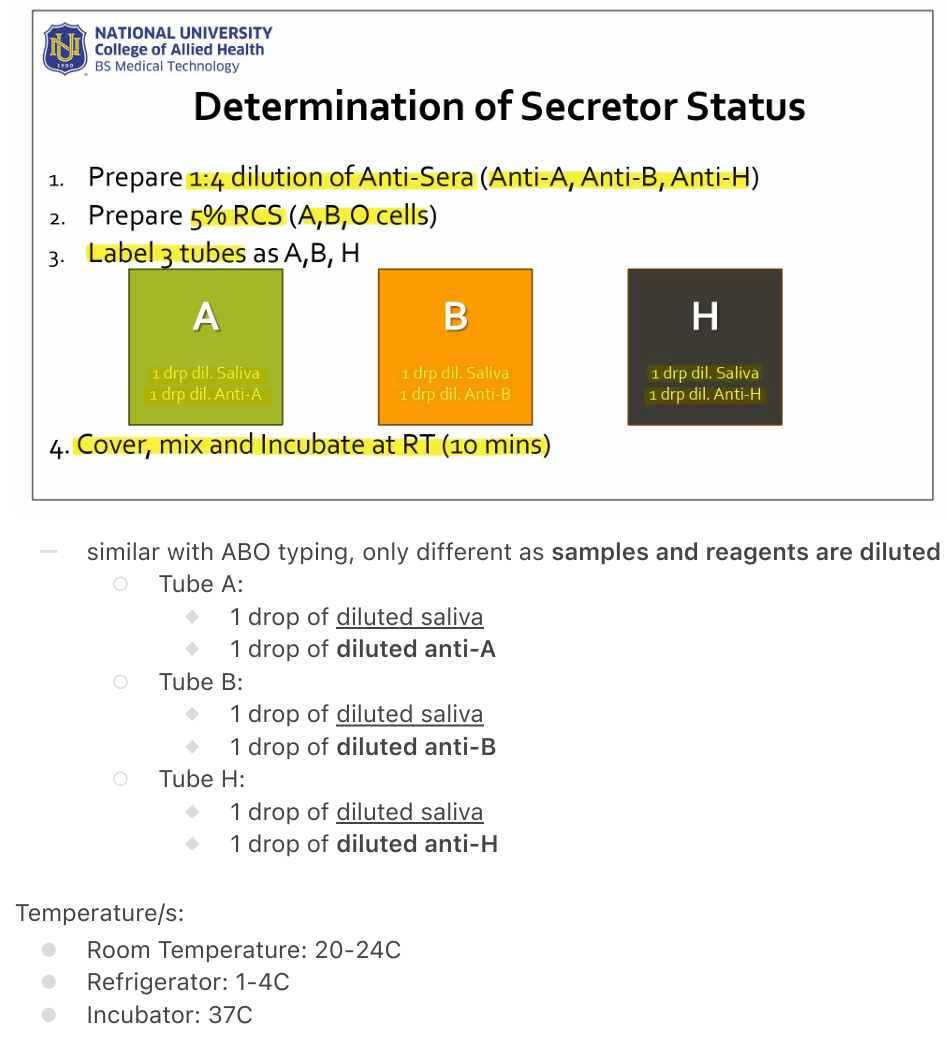

Secretor Status Determination


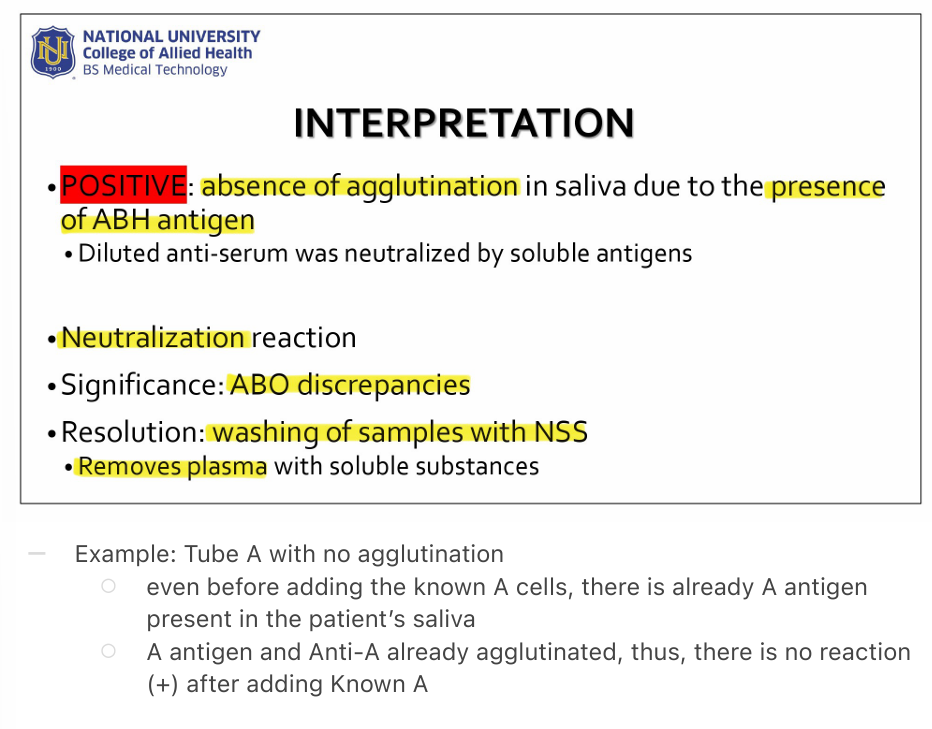

Secretor Status Determination


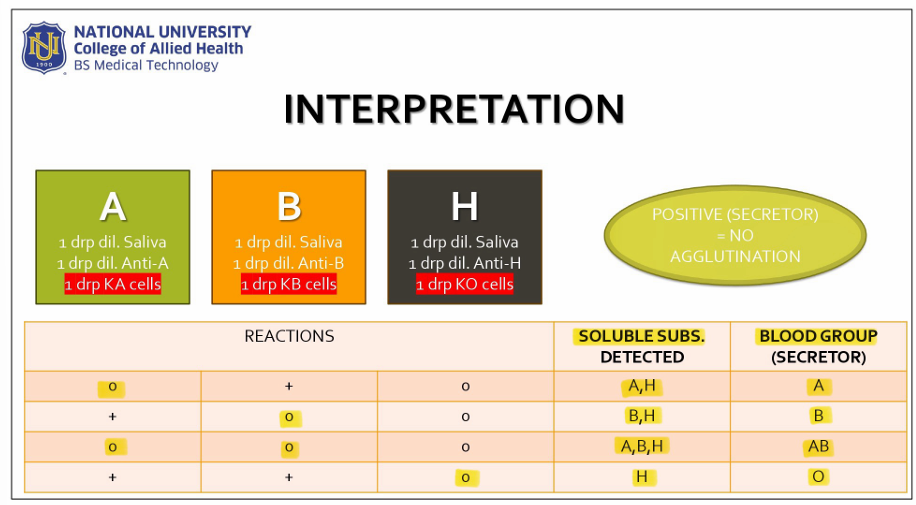

Secretor Status Determination
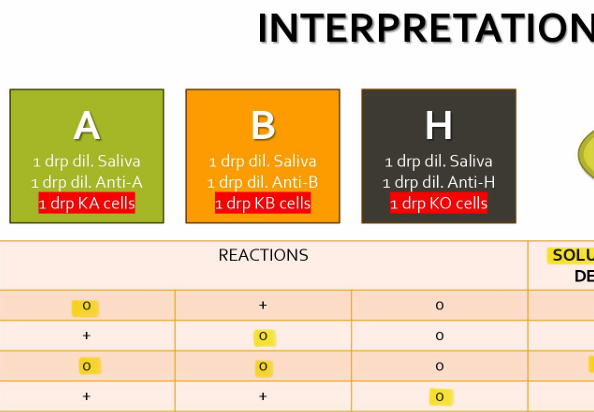
ABO Discrepancy
an unexpected result which can indicate incorrect procedure or something unique with the patient (e.g. gene, blood type)
forward and reverse typing doesn’t correlate
there is a weak reaction (e.g. Anti-A in Patient X); problem depends on where it lies:
forward - antigens
reverse - antibodies
ABO Discrepancy
to know if there is discrepancy:
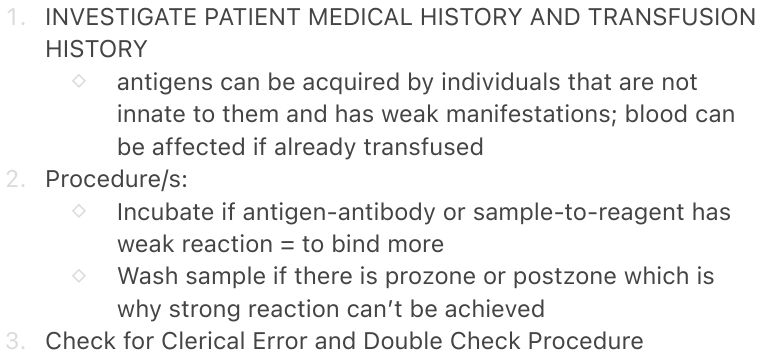
ABO Discrepancy
Resolution/s:
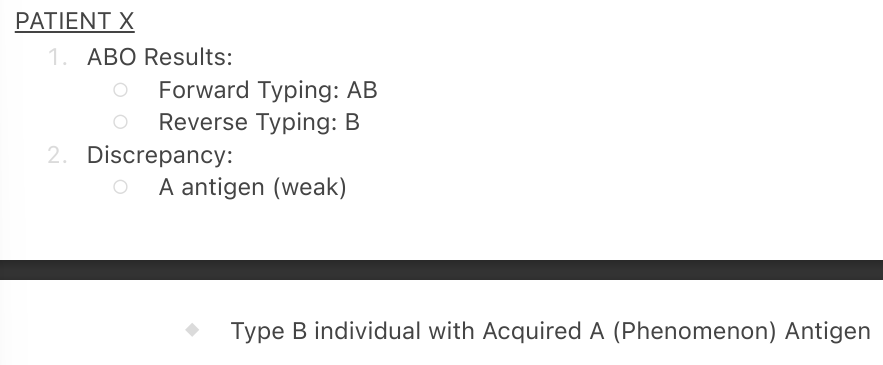
ABO Discrepancy
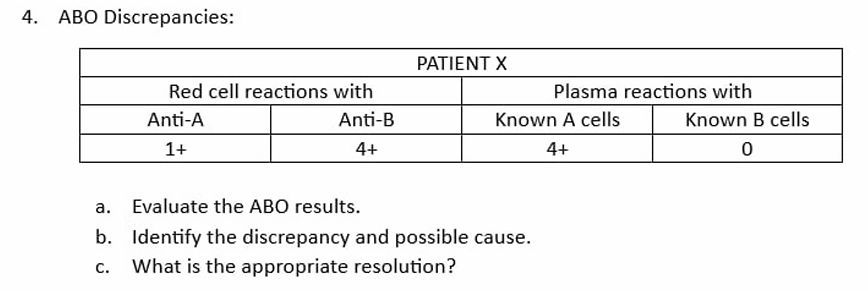

ABO Discrepancy

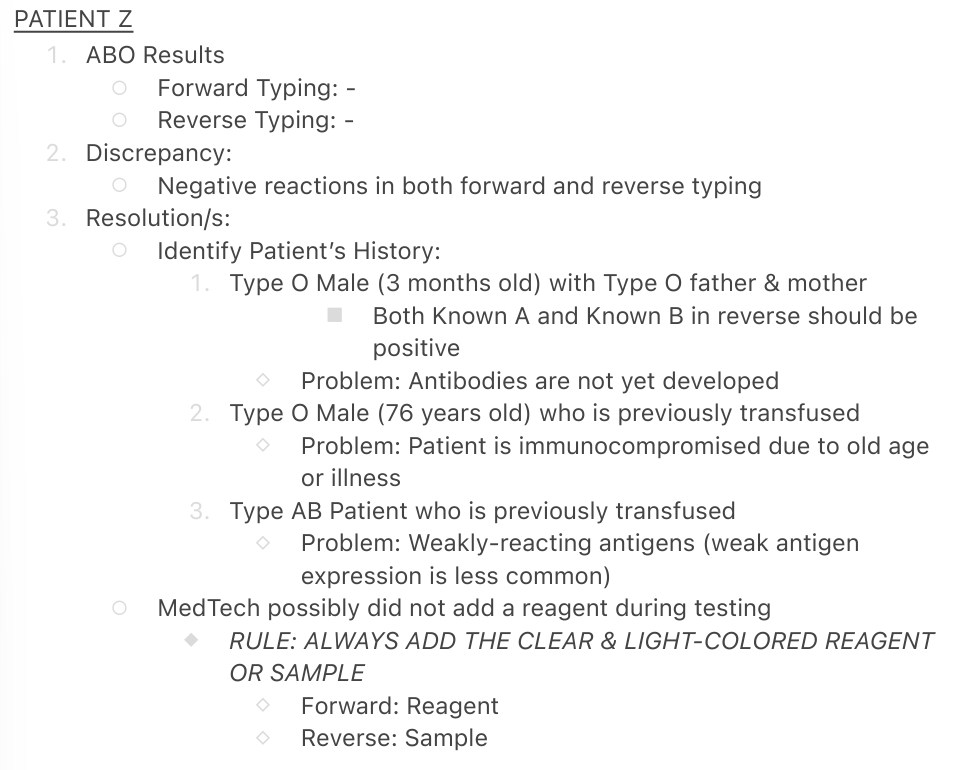
ABO Discrepancy


Rh Typing

Rh Typing

Rh ANTIGENS
D Status Determination
characterized as nonglycosylated proteins on red cell membrane
D antigen
D Status Determination
is the most clinically significant of all non-ABO antigens, It is so highly immunogenic.
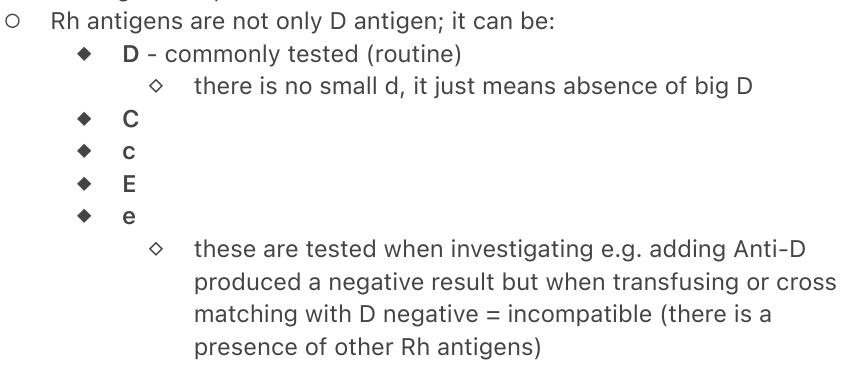
D antigen
D Status Determination
The only Rh antigen that undergoes routine testing, except in the case of investigation of unexpected antibodies.
D antigen
D Status Determination
can trigger Hemolytic Transfusion Reaction (HTR) and Hemolytic Disease of Fetus and Newborn (HDFN) = more severe and deadly with — compared to ABO
Du phenotype
weakened expression of the D antigen/ weak D

Mechanisms for Du phenotype occurrence:
weak D antigen expression occurs due to (3) causes of problem with the patient’s Rh antigen:


Mechanisms for Du phenotype occurrence:
weak D antigen expression occurs due to (3) causes of problem with the patient’s Rh antigen:

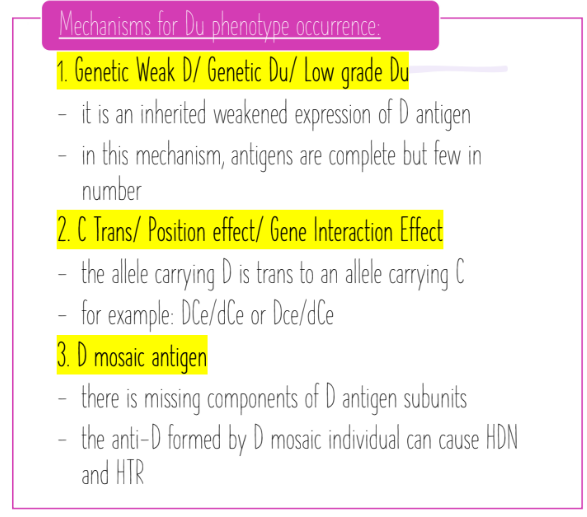
Mechanisms for Du phenotype occurrence:
weak D antigen expression occurs due to (3) causes of problem with the patient’s Rh antigen:



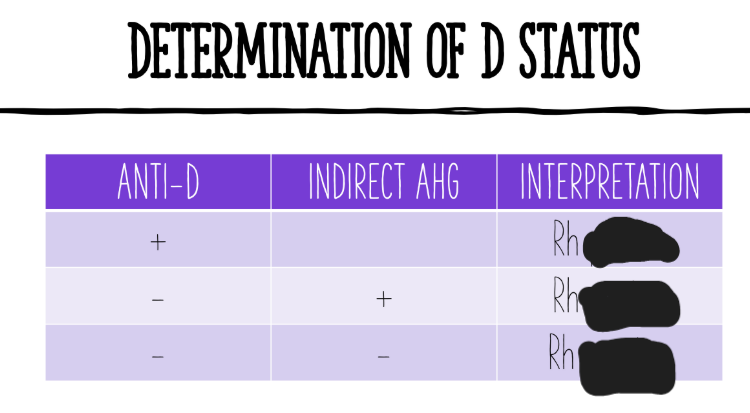
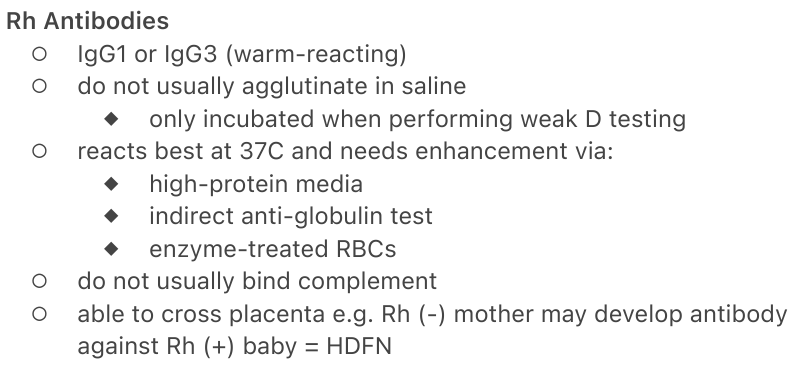
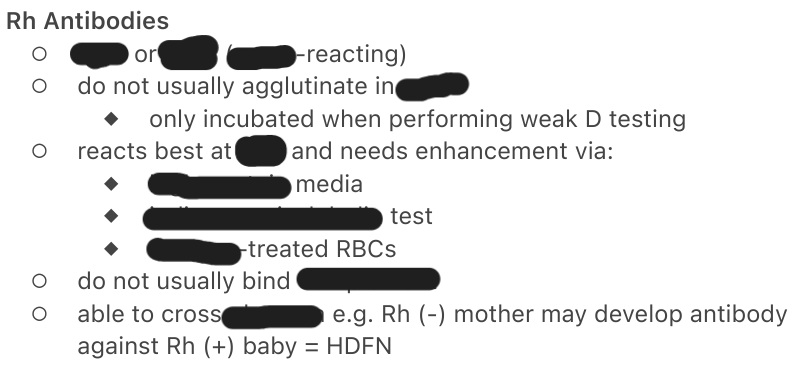
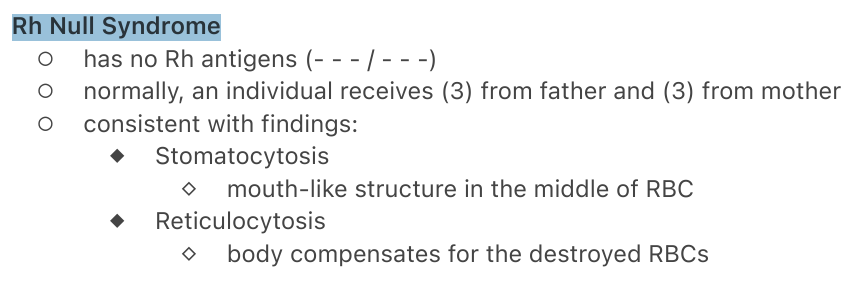
Rh Null Syndrome
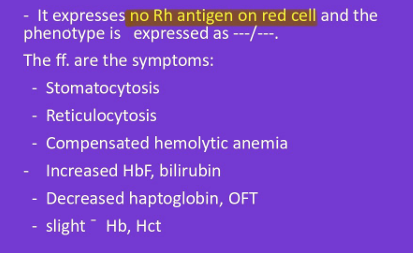
Anti-Rh:29
– the antibody of broadest specificity
- described as anti-total Rh
- can be produced by Rh null individuals

Positive DAT
False Positive reactions are due to:
most common cause of Rh-typing (Du typing) discrepancies.
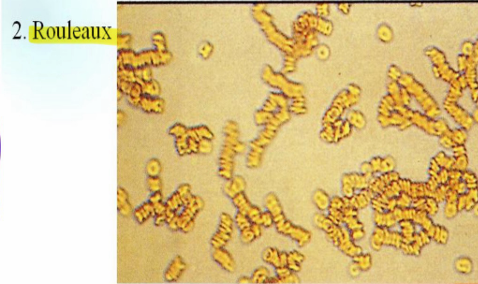
Rouleaux
False Positive reactions are due to:
- occurs due to high plasma proteins in blood; reason why samples are washed (red cell suspension)

Cold Autoagglutinins
False Positive reactions are due to:
antibodies that are innate to patient; since they are cold-reacting, place the sample in incubator to stop their reaction